
The Göktürks, Türks, Celestial Turks or Blue Turks were a nomadic confederation of Turkic peoples in medieval Inner Asia. The Göktürks, under the leadership of Bumin Qaghan and his sons, succeeded the Rouran Khaganate as the main power in the region and established the First Turkic Khaganate, one of several nomadic dynasties that would shape the future geolocation, culture, and dominant beliefs of Turkic peoples.

The Uyghurs, alternatively spelled Uighurs, Uygurs or Uigurs, are a Turkic ethnic group originating from and culturally affiliated with the general region of Central and East Asia. The Uyghurs are recognized as the titular nationality of the Xinjiang Uyghur Autonomous Region in Northwest China. They are one of China's 55 officially recognized ethnic minorities. The Uyghurs are recognized by the Chinese government as a regional minority and the titular people of Xinjiang.

The Turkic peoples are a collection of diverse ethnic groups of West, Central, East, and North Asia as well as parts of Europe, who speak Turkic languages.

The Kyrgyz people are a Turkic ethnic group native to Central Asia. They are primarily found in Kyrgyzstan, Uzbekistan, China, Pakistan and Afghanistan. A Kyrgyz diaspora is also found in Russia, Tajikistan, and Kazakhstan. They speak the Kyrgyz language, which is the official language of Kyrgyzstan.

The Bashkirs or Bashkurts are a Kipchak Turkic ethnic group indigenous to Russia. They are concentrated in Bashkortostan, a republic of the Russian Federation and in the broader historical region of Badzhgard, which spans both sides of the Ural Mountains, where Eastern Europe meets North Asia. Smaller communities of Bashkirs also live in the Republic of Tatarstan, the oblasts of Perm Krai, Chelyabinsk, Orenburg, Tyumen, Sverdlovsk and Kurgan and other regions in Russia; sizable minorities exist in Kazakhstan and Uzbekistan.

The Chuvash people, plural: чӑвашсем, çăvaşsem; Russian: чува́ши ) are a Turkic ethnic group, a branch of the Ogurs, native to an area stretching from the Idel-Ural (Volga-Ural) region to Siberia. Most of them live in Chuvashia and the surrounding areas, although Chuvash communities occur throughout the Russian Federation. They speak Chuvash, a unique Turkic language that diverged from other languages in the family more than a millennium ago. Among the Chuvash believers, the majority are Eastern Orthodox Christians.
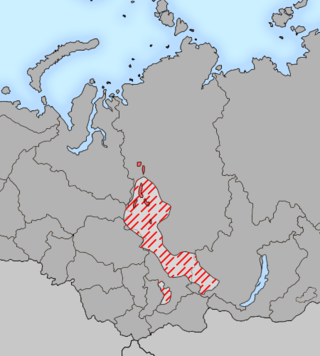
The Yeniseian languages are a family of languages that are spoken by the Yeniseian people in the Yenisei River region of central Siberia. As part of the proposed Dené–Yeniseian language family, the Yeniseian languages have been argued to be part of "the first demonstration of a genealogical link between Old World and New World language families that meets the standards of traditional comparative-historical linguistics". The only surviving language of the group today is Ket.
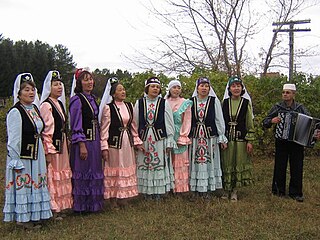
Siberian Tatars or Sybyrs/Sibirs are the indigenous Turkic-speaking population of the forests and steppes of Western Siberia, originating in areas stretching from somewhat east of the Ural Mountains to the Yenisey River in Russia. The Siberian Tatars call themselves Yerle Qalıq, to distinguish themselves from more recent Volga Tatar immigrants to the region.

The Khakas are a Turkic indigenous people of Siberia, who live in the republic of Khakassia, Russia. They speak the Khakas language.
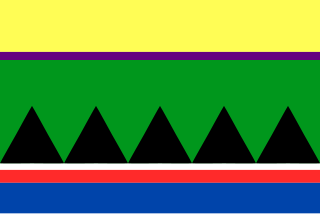
The Selkup, until the 1930s called Ostyak-Samoyeds (остяко-самоеды), are a Samoyedic speaking Uralic ethnic group native to Siberia. They live in the northern parts of Tomsk Oblast, Krasnoyarsk Krai and Tyumen Oblast.

Kamasins were a collection of tribes of Samoyedic peoples in the Sayan Mountains who lived along the Kan River and Mana River in the 17th century in the southern part of today's Krasnoyarsk Krai.

Kamassian is an extinct Samoyedic language. It is included by convention in the Southern group together with Mator and Selkup. The last native speaker of Kamassian, Klavdiya Plotnikova, died in 1989. Kamassian was spoken in Russia, north of the Sayan Mountains, by Kamasins. The last speakers lived mainly in the village of Abalakovo. Prior to its extinction, the language was strongly influenced by Turkic languages.

Mator or Motor was a Uralic language belonging to the group of Samoyedic languages, extinct since the 1840s. It was spoken in the northern region of the Sayan Mountains in Siberia, close to the Mongolian north border. The speakers of Mator, Motorians or Motors, lived in a wide area from the eastern parts of the Minusinsk District (okrug) along the Yenisei River to the region of Lake Baikal. Three dialects of Mator were recorded: Mator proper as well as Taygi and Karagas. Mator was influenced by Mongolic, Tungusic and Turkic languages before it went extinct, and may have even been possibly influenced by the Iranic languages.

The Volga Tatars or simply Tatars are an Eastern European Turkic ethnic group native to the Volga-Ural region of European Russia. They are subdivided into various subgroups. Volga Tatars are the second-largest ethnic group in Russia after ethnic Russians. Most of them live in the republics of Tatarstan and Bashkortostan. Their native language is Tatar, a language of the Kipchak-Bolgar subdivision of the Turkic language family. The predominant religion is Sunni Islam.
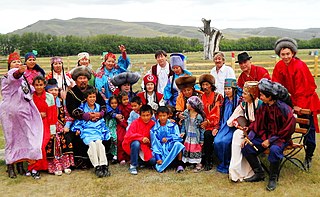
The Yenisei Kyrgyz, were an ancient Turkic-speaking people who dwelled along the upper Yenisei River in the southern portion of the Minusinsk Depression from the 3rd century BCE to the 13th century CE. The heart of their homeland was the forested Tannu-Ola mountain range, in modern-day Tuva, just north of Mongolia. The Sayan mountains were also included in their territory at different times. The Yenisei Kyrgyz Khaganate existed from 538 to 1219 CE; in 840, it took over the leadership of the Turkic Khaganate from the Uyghurs, expanding the state from the Yenisei territories into Central Asia and the Tarim Basin.
Leonid Pavlovich Potapov was a Soviet and Russian ethnographer specializing in the study of peoples of southern Siberia.
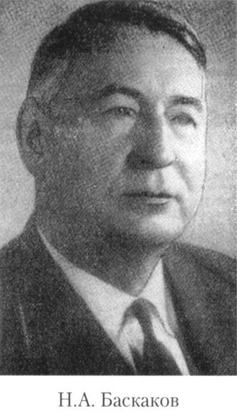
Nikolai Aleksandrovich Baskakov was a Soviet Turkologist, linguist, and ethnologist. He created a systematization model of the Turkic language family, and studied Turkic-Russian contacts in the 10-11th centuries CE. During 64 years of scientific work (1930-1994), Baskakov published almost 640 works including 32 books. The main area of Baskakov's scientific interests was linguistics, but he also studied folklore and ethnography of the Turkic peoples, and also was a musician and composer.
The Abugach or, to the Russians, Abugachaevtsy, were a people from the region around the Ural Mountains and believed to have been of Samoyed ancestry. Witnesses from the 19th century, however, identify their spoken language as Turkic. Eventually, the Abugach became one of the ethnic groups that made up the Koibal sub-division of the Khakass.

The Yeniseian people refers either to the modern or ancient Siberian populations speaking Yeniseian languages. Despite evidence pointing to the historical presence of Yeniseian populations throughout Central Siberia and Northern Mongolia, only the Ket and Yugh people survive today. The modern Yeniseians live along the eastern middle stretch of the Yenisei River in Northern Siberia. According to the 2021 census, there were 1,088 Kets and 7 Yugs in Russia.
Khakass alphabets are the alphabets used to write the Khakas language.














